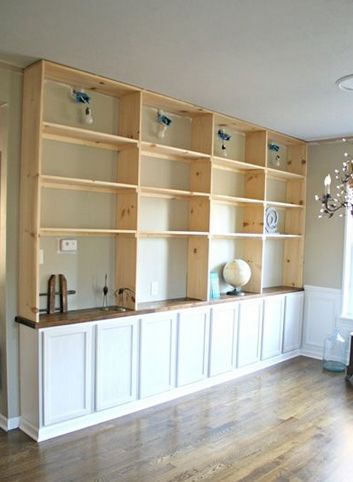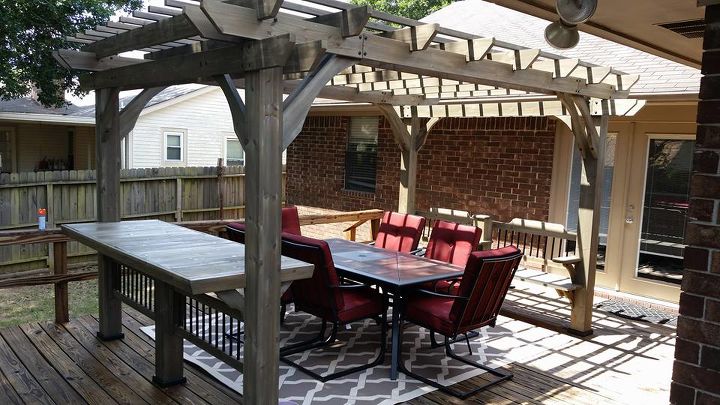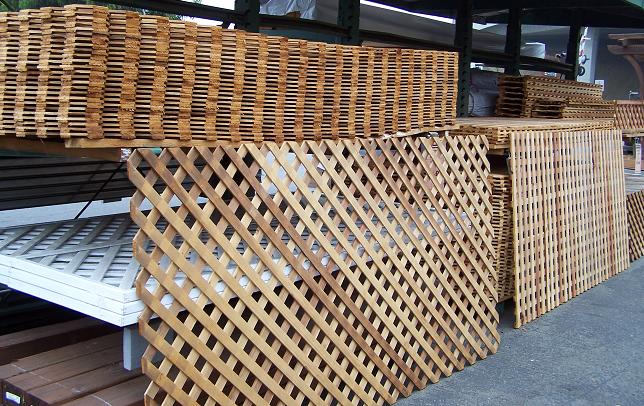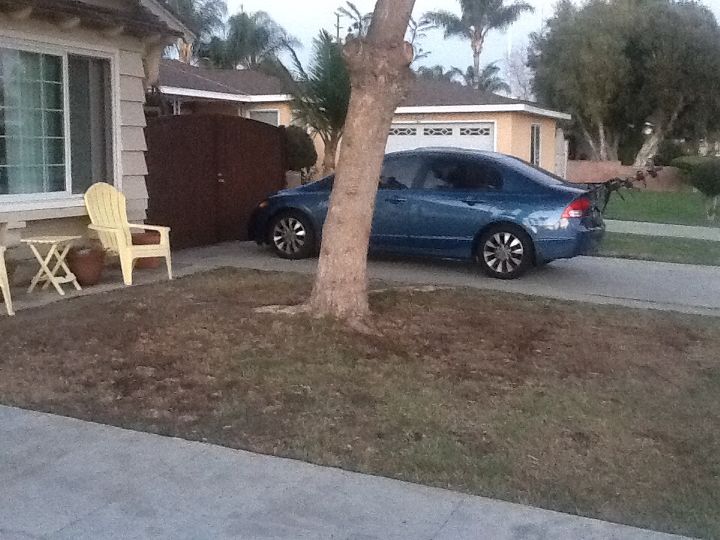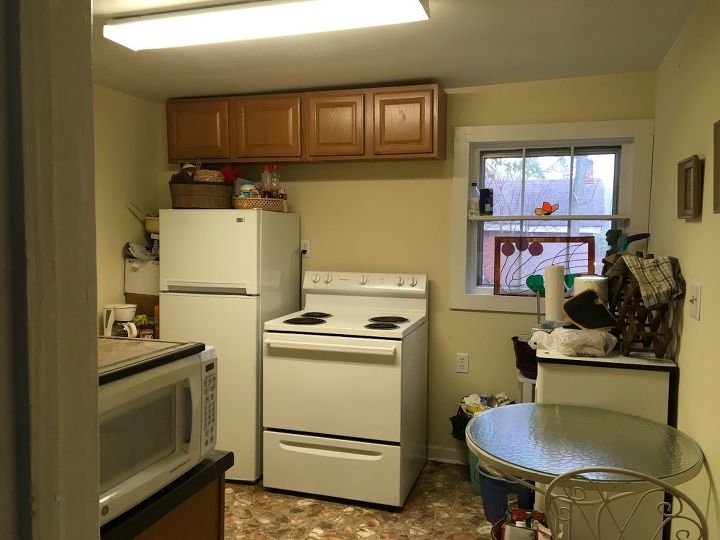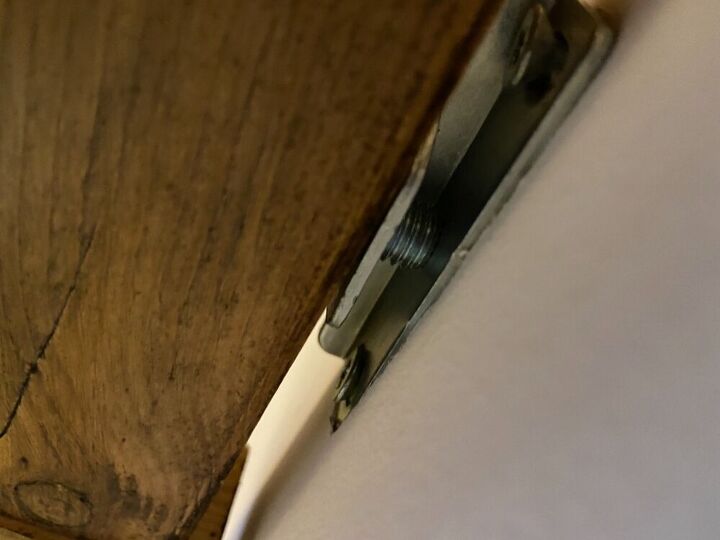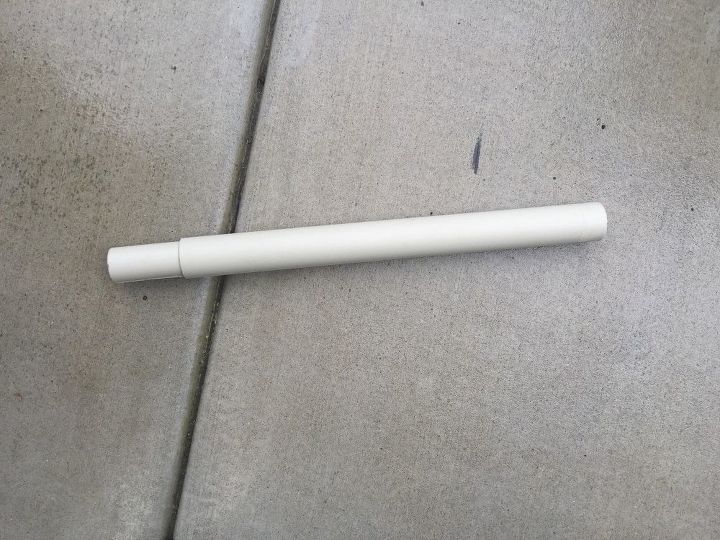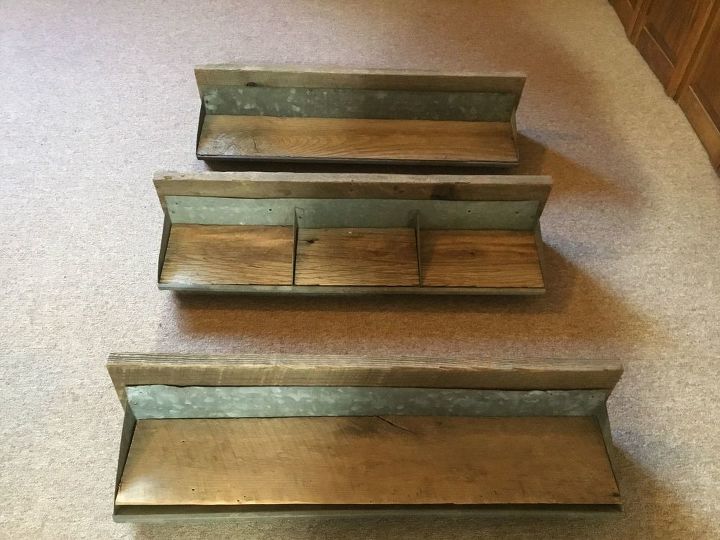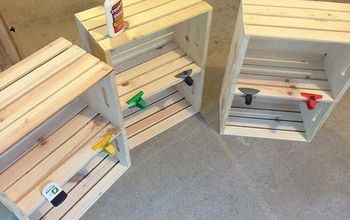The best way to do Built-in Shelves

-
I personally like the small holes with the dowel pints myself. it allows for greater modifications to what you can put on the shelves once they are complete. Done correctly as its shows in your photo combined with the proper sealers and colors these holes will not even been seen once everything is done and finished. Nice Job!
 Woodbridge Environmental Tiptophouse.com
on Jul 23, 2014
Helpful Reply
Woodbridge Environmental Tiptophouse.com
on Jul 23, 2014
Helpful Reply -
-
For our built in bookcases in our home library, we did a combination of dado and holes for dowel pins. The dado helps give extra "square" support when used for the shelf near the middle of the unit, especially when you are building a backless unit. This works for both built in or free standing units. I recommend it even when backing a free standing unit for added stability. The dowel pin holes allows for greater versatility when placing books or other items on your shelves. I draw up all our plans and hubby and I work together to build those plans. I decided instead of buying a jig, we could use pegboard we had scraps of to make sure the holes were evenly spaced on both front and back of the inside of the sides of the units. After deciding how far apart we wanted the holes I drew circles around the holes in the pegboard. Hubby clamped it to the side pieces and, using our drill press, drilled only the holes that had read circles around them. I'm sorry, I've yet to move my photos from my old computer to this one or I'd share how he did it.
 Z
on Jul 23, 2014
Helpful Reply
Z
on Jul 23, 2014
Helpful Reply -
-
Hi, it really depends on the size of the unit and the span. For something like in the photo you should have a glued in shelf with a dado in the sides of the unit. This should be around the middle, vertically of each section. This keeps the sides from bowing in or out. After that I prefer pin holes because I find the cleats look cumbersome, and they do not leave the shelves adjustable for different sized objects. Also, you cannot span across a long section without the shelf itself bowing. There are charts for this which explain what the maximum span would be. Obviously if the shelves are made of thinner material, they will not hold up to a lot of weight (books) without bending. (MDF bends as well)
 Follow your H
on Jul 26, 2014
1 marked as helpful Reply
Follow your H
on Jul 26, 2014
1 marked as helpful Reply -
-
The shelves will be stronger if you use good quality 3/4 inch plywood. If you glue edge molding to the front of the shelf, it will look good and help make them more rigid. I made built-ins for our living room from 3/4 inch plywood, basically boxes with fixed shelves in the middle and adjustable shelves for the rest. Molding on the fronts of the shelves and the box. You can fasten a backing like thin plywood or beadboard on the back to keep it square while you're putting it together.
 Darla
on Jul 26, 2014
1 marked as helpful Reply
Darla
on Jul 26, 2014
1 marked as helpful Reply -
-
I've used the iron-on veneer before, and it works great for finishing plywood edges.
 Darla
on Jul 26, 2014
1 marked as helpful Reply
Darla
on Jul 26, 2014
1 marked as helpful Reply -
-
I like the Built-in Shelves
 Wendy Ann Short
on Jul 26, 2014
Helpful Reply
Wendy Ann Short
on Jul 26, 2014
Helpful Reply -
-
Why don't you try a sawtooth shelf system. They carry them at Lee Valley Hardware. You can find them here: http://www.leevalley.com/US/hardware/page.aspx?p=69005&cat=53&ap=1
 BeadSiren
on Jul 26, 2014
Helpful Reply
BeadSiren
on Jul 26, 2014
Helpful Reply- See 1 previous
-
-
I've seen Martha Stewart use a similar system to the sawtooth shelving system. She raves about it, and I agree it is awesome! The interlocking feature actually makes shelf becomes stronger when additional weight is added rather than weakening the support. This is the first I've seen it available as a kit.
 Norma Jones
on Aug 09, 2014
1 marked as helpful Reply
Norma Jones
on Aug 09, 2014
1 marked as helpful Reply -
-
Did you think to drill a few holes in different areas of your shelving so the lights will go all the way thru? It will not weaken the boards by staggering them. Pictures, special objects on top 2 shelves and books lower. By putting the holes toward the front, where nothing heavy sits any way, some light will show all way down. Just a thought. This is what I have been looking to do for basement stairs to close them off and will do this lighting. I hope my idea works.
 Blb2
on Mar 22, 2015
Helpful Reply
Blb2
on Mar 22, 2015
Helpful Reply -
Related Discussions
Any ideas on how I could use leftover lattice? Inside decorating?
I have leftover lattice and would like to use it for some sort of indoor decorating project. Any ideas on a good use for it? It looks like this, just plain unfinished... See more
Planting under shady tree with roots
I have a jacaranda tree in my front yard with roots growing above ground. The tree has fern-like leaves that have prevented little growth of grass underneath. What ca... See more
Alternate way to install kitchen shelves that doesn't include drilling
I want to display my bowls, and other colorful accessories in my tiny tiny kitchen. There are no cabinets! Except those very high ones that i can’t reach! So all I ... See more
How do I remove a floating shelf?
Hello! We moved in to a new house and the previous owners had installed some floating shelves. How we we can’t work out how to take them off. We’ve tried pulling ... See more
Where to purchase insert tubes that go between plastic shelves?
Does anyone know where I can purchase these tubes? The manufacturer does not sell them separate from the shelves. I also cannot find PVC pipe at 1 1/8" to cut to fi... See more
What should the height/spacing be between 3 shelves in a living room?
Want to hang 3 shelves roughly 29 inches long/ 6 inches high. I’ve got 8 foot walls, cathedral ceiling. We up cycled some old barn wood and some metal troughs. Used... See more
